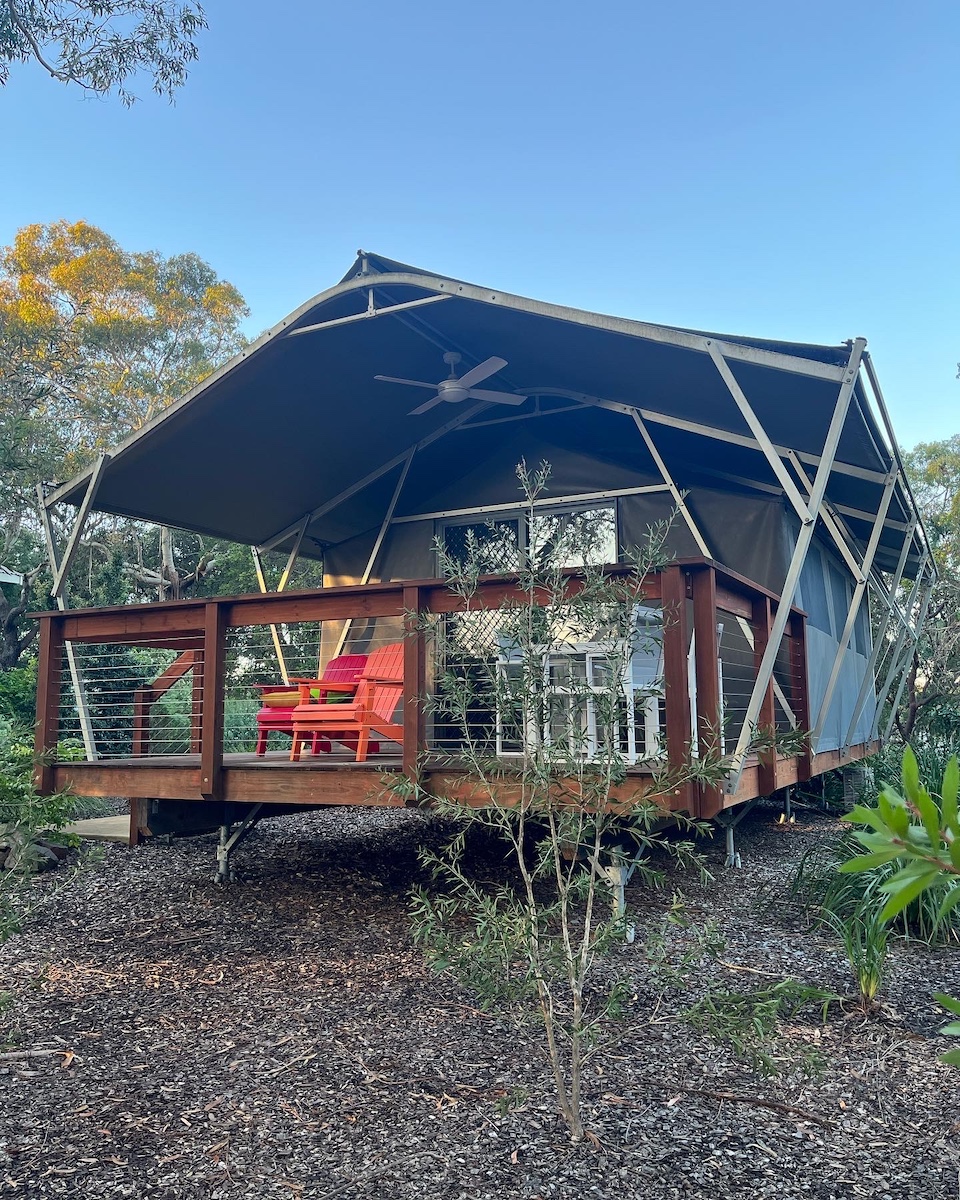It all started with talk of a frog.
Over dinner one night, my family was debating where our next big trip should take place as my son’s newly acquired White’s tree frog, Didgeridoo, snoozed peacefully in his enclosure in the next room.
“How about going to Australia where we can see a White’s tree frog in its native habitat?” I asked. It didn’t take much convincing.
Living Amongst Australia’s Famed Marsupials

Turns out, Australia is a treasure trove of captivating creatures found nowhere else on Earth, and there are plenty of places to get up close and personal with Down Under’s wildlife.
What better way to get to know Australia’s most iconic animal, the koala, than to go live amongst them for a while? We found the perfect spot to do so at the Port Stephens Koala Sanctuary, a relatively new outpost two hours north of Sydney on a lesser traversed spot of Australia’s eastern seaboard. The sanctuary was built with a single purpose — to rehabilitate sick and injured koalas and other wildlife at the adjacent animal hospital, with the goal of eventually returning them to their natural habitat.
The sanctuary’s James Cook (his real name, sans the captain title) set us up with a two-night stay in one of the property’s cozy and well-appointed “glamping tents” situated on the immaculately groomed grounds. After digging into a hamper of goodies and wine left by the staff and enjoying a small feast on our tent’s front porch, we settled down to a glorious cacophony of bird sounds ranging from sweet singing to robust cackling from magpies, lorikeets, kookaburras and more which call the sanctuary home. It went on into the late evening and wee hours of the morning.
After arising the next day, we quickly dressed and went to meet up with Seth, our guide, for a personalized tour. Turns out there is a lot to be learned about the fuzzy, irresistible koala: for starters, ancient versions of the species date back 40 million years when they weighed in at 150 pounds. Koalas are solitary and exclusively tree-dwelling, only leaving the tallest part of the eucalyptus tree in which they are stationed in order to find a new tree with newer leaves. It’s during this occasional migration from tree to tree that they are prone to serious injury, mostly from other predatory animals including domestic dogs, or horrifyingly, passing cars.
Seth escorts us to the skywalk area of the sanctuary, where 11 koalas permanently reside as they are unable to return to the wild. We arrive at feeding time to witness several of them happily munching away on their leaves, while others serenely slumber, as koalas do for up to 20 hours a day. Seth explains that while koalas are a singular species, there are two types: Northern and Southern, both of which are found in only a few regions of the country.
And then he shares a shocking piece of news: largely due to human development resulting in destruction of its natural habitat, paired with disease, injuries and the calamity of the 2019 bushfires, koalas are sadly on a path to extinction by 2050.
Up Close With Other Native Wildlife

Second in popularity to the koala is the kangaroo, so plentiful in certain regions of the continent that they are commonly found hopping through people’s backyards. At the Australian Reptile Park and the Lone Pine Koala Sanctuary, kangaroos are pettable and feedable, as long as they are in the mood. Less people friendly but nevertheless fun to observe are feisty Tasmanian devils, methodic wombats and the supremely odd platypus.
Wild dingoes can only be seen in their purebred form on K’gari, the largest sand island in the world and a World Heritage site. It’s easy to confuse them with domesticated dogs as they are almost indistinguishable; but, as our tour bus driver warned, they are best observed at a distance as dingoes have been known to attack humans. We spied one delightfully rolling around in the shallow ocean waters, enjoying a makeshift bath.
Looking to the skies, we spotted a cluster of gray-headed flying foxes in Port Douglas. Also referred to as megabats, they are the largest of their kind in Australia and have a wingspan that reaches more than three feet across. They were spectacular and a bit intimidating.
Perhaps the most elusive Australian creature is the cassowary — a large flightless bird reminiscent of the one depicted in the Disney movie, Up. Found in the ancient, 135-million-year-old Daintree National Rainforest in Queensland, spotting a cassowary in the wild can take days, or even weeks. We had better luck on our Daintree River cruise, spotting a saltwater crocodile sunning himself on the riverbank and a cluster of black snakes doing the tango fandango in a tree.
As far as the White’s tree frog: we finally found one. It was located in the women’s loo, next to the visitor’s center where we boarded our river cruise. It was the only one we saw, but it was worth the trip.
Best Wildlife Spotting in Eastern Australia
Port Stephens Koala Sanctuary, Port Stephens, NSW
Australia Reptile Park, Somersby, NSW
Daintree National Rainforest, Queensland
K’gari (Fraser Island), Queensland


